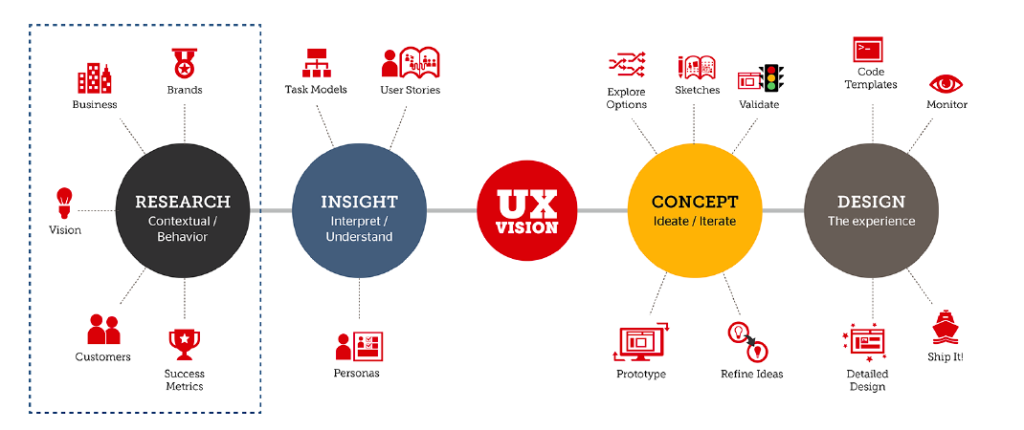In my role as Chief Technologist over at ArCompany, and from a general love of technology in general, I test, play with, compare and recommend all sorts of different platforms, software technologies and solutions.
There’s just something about the promise and potential of data and technology – when used properly and for the benefit of customers as well as the business – that gets my motor running (sorry, Steppenwolf fans!).
An interesting side effect of this is you get to see firsthand why certain social software technologies succeed while others fail, even though on paper they may look the same.
The ironic thing is, the ones that fail could easily avoid their fate – or at least have a better chance of avoiding it – by simply being better prepared.
They Don’t Understand the Space
One of the biggest mistakes where I see companies tripping over is building a platform for a space they have no experience in. Being a great coder or developer is one thing; being a great developer of coder for a space you don’t understand is another.
With social media offering a real-time and often pervasive invitation to look at how people converse with each other, and what opportunities this offers for brands and organizations, the potential for true customer understanding is huge.
But this level of understanding comes at a price – you need to understand text analytics, ontology, and how these two interconnect when it comes to identifying emotional triggers in a conversation.
Because each social platform has its own little nuances, this task becomes even more convoluted. If you, as a software company, don”t have the personnel that understands these nuances and what that means for data analysis and filtering, your platform will be rendered ineffective.
Too many companies would rather place this important part of the puzzle in the hands of developers only, instead of partnering developers with the kind of data analysts and human language scientists that can turn a so-and-so platform into something so much better at connecting the human dots.
This immediately limits the usefulness of the platform. After all, you wouldn’t ask a learner driver to get behind the wheel of an F1 race car, would you?
They’re In It Just for the Money
Businesses need to make money. That’s a given. As I’ve said several times before when talking about influence marketing and how companies should be using it, I challenge any business to stay afloat on goodwill and social proof alone.
But here’s the thing – when you create something purely with the intent of making a lot of money, and not really caring about the quality of the product or the customers that will be using it, it will more often than not bite you in the ass.
While he receives a lot of criticism about his platform, Facebook CEO Mark Zuckerberg always struck me as having the right mentality when it came to this issue.
We don’t build services to make money; we make money to build better services.
Fourteen words. A simple mission statement in fourteen words. Yet it’s one that has seen Facebook become – arguably – the biggest social software platform in the world.
It’s a mantra the likes of Apple and Google follow. By putting the needs of the user first, and building solutions that will actually benefit them and solve their problems, success is the organic end result.
The way Apple products seamlessly connect to each other via the iCloud platform; the way Google+ drives every Google product touch-point when it comes to interacting with Google’s customers.
It wasn’t luck or chance that saw these three companies, and others like them, make this focus on the end user the core product feature. Each company knew that by offering something that just works, and isn’t complicated or trying to be something it’s not, money would follow.
Too many social software platforms enter the space thinking that social media is the golden goose for profit. It can be; but not if the sole intent is to make money and to heck with the user experience.
They Don’t Understand Community and Content
For many startups, marketing dollars are a luxury. While some companies are fortunate to have generous investors from day one, the majority of startups, especially in the social space, don’t enjoy that umbrella.
For these companies, content and community are two of the core methodologies for getting people to know about you and/or your product, and why they should use you over your competitors who have been established for a while.
Not only that, but you’re walking the talk as well as just sharing cool soundbites. This is just as true for established companies – the social space is a hive of conversations, groups, communities, chats and more. Get the right people for that part of your company’s growth and you’re giving yourself a fighting chance of success.
Look at companies like Marketwired, with Sheldon Levine; or Salesforce MarketingCloud, with Trish Forant; or InNetwork Inc., with Daniel Hebert and Kelly Jennex. The first two companies are well-established, while InNetwork Inc. has just come onto the scene in the last few months.
All three, though, share the mindset that content and community will help them not only grow awareness of their products and what their company does, but also create a loyal user-base as well as drive innovation through the feedback from their communities, and the content that community leaves points of view on.
Too many social software platforms, unfortunately, see content and community as a burden rather than an opportunity.
So instead of hiring the right people that can truly drive this part of the strategy, they instead do nothing or, perhaps worse, hand over the reins to engineers or developers that – through no fault of their own – are clearly out of their depth.
The three companies mentioned above show what happens when your social footprint strategy is as key as the social software you’re developing.
Wake Up or Break Up
In the last 12-18 months, there’s been a lot of consolidation in the social space. Some of this is through choice; some, through financial needs.
Either way, these companies have continued to evolve and, for the most part, improve. Because they’ve continued to keep the right people; stay on the right path; and concentrating on the user experience as much as the cool development experience.
Newer platforms coming into play continue this mindset. Guys like oneQube, TrendSpottr and SqueezeCMM, for instance, place utility and solutions over features and vapourware.
They understand the marketplace: what works, what doesn’t, and – more importantly – why. It’s not rocket science, yet so many social platforms make it look that way.
Then again, they only have themselves to blame. A CEO of a company that’s struggling in the space right now once said to me,
It doesn’t matter what we build. Good marketers can market shit.
While that might be true, it’s also a damning statement on your goals and vision, or lack of. While you might be able to sell shit, customers and users that can’t use that shit will soon move elsewhere, where there needs are actually met.
Leaving you to wonder why it’s your company that’s now in the shit…
UX image: headspace






